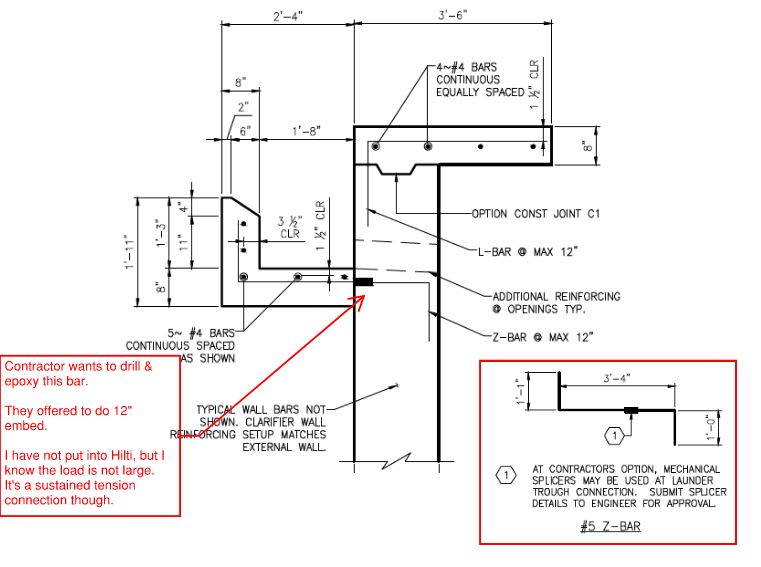JoelTXCive
Civil/Environmental
- Jul 24, 2016
- 933
We have a wastewater treatment plant under construction and the contractor has submitted and RFI for the launder trough in the clarifier tank.
They would like to replace the connection below with a drilled & epoxied connection. The loads are light. I have not done the calc in a while, but if you take the moment and resolve it into a force couple, then the tension is less than 1 kip per wall foot around the perimeter.
My hang-up on approving the change is that it's a sustained tension load; and I thought epoxies were subject to shrinkage when in sustained tension.
What do you think?
To add fuel to fire......my old boss approved this exact RFI with the same contractor 3 years ago; so I'm sure to get a bunch of blowback from the contractor if I reject the RFI. (which is what I'm leaning towards)

They would like to replace the connection below with a drilled & epoxied connection. The loads are light. I have not done the calc in a while, but if you take the moment and resolve it into a force couple, then the tension is less than 1 kip per wall foot around the perimeter.
My hang-up on approving the change is that it's a sustained tension load; and I thought epoxies were subject to shrinkage when in sustained tension.
What do you think?
To add fuel to fire......my old boss approved this exact RFI with the same contractor 3 years ago; so I'm sure to get a bunch of blowback from the contractor if I reject the RFI. (which is what I'm leaning towards)

